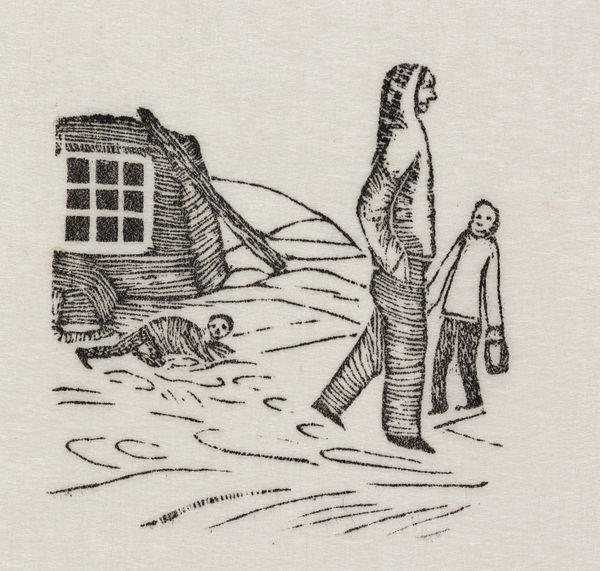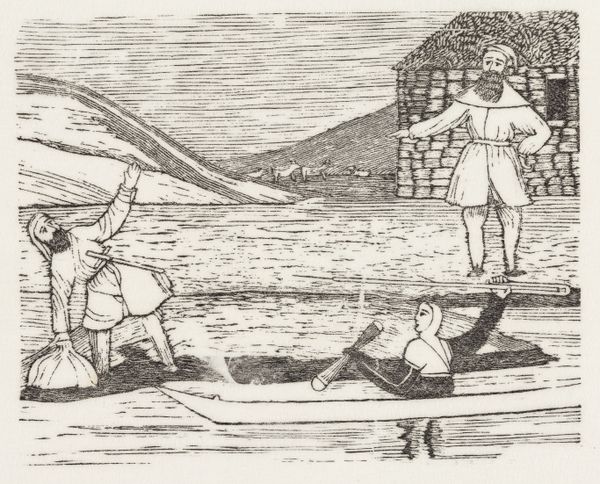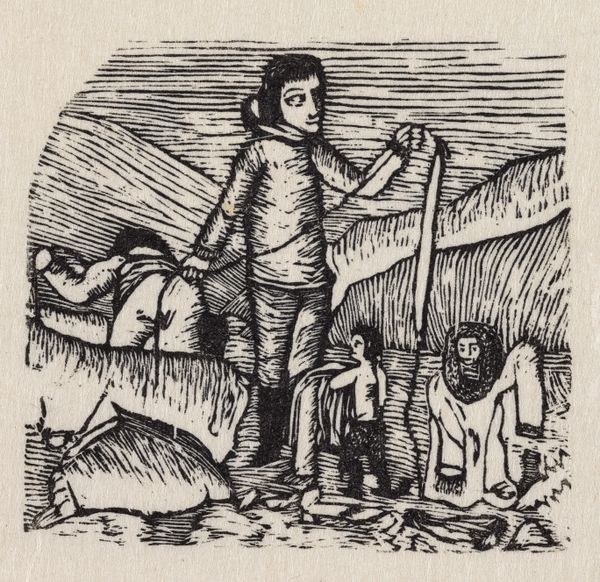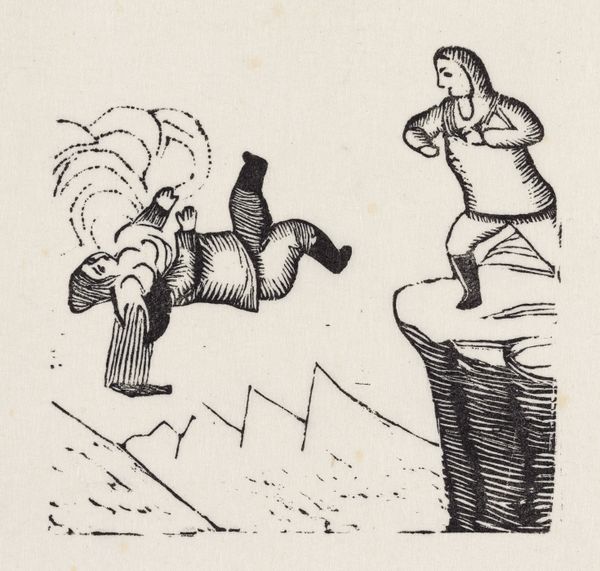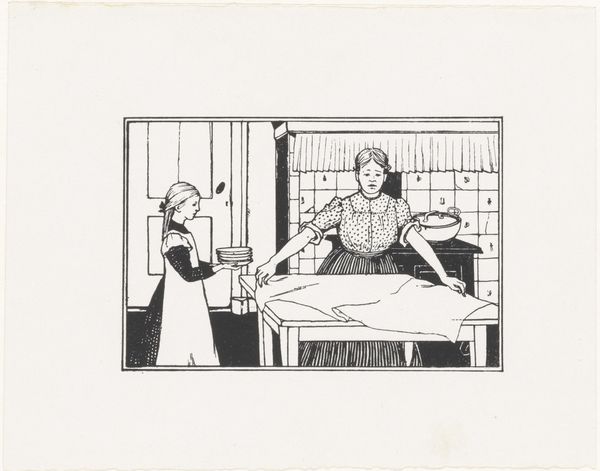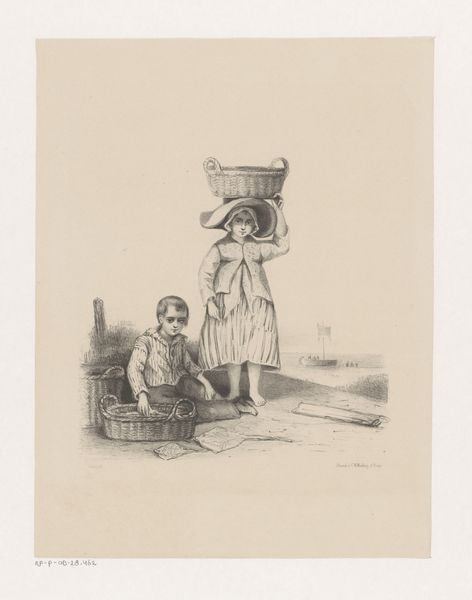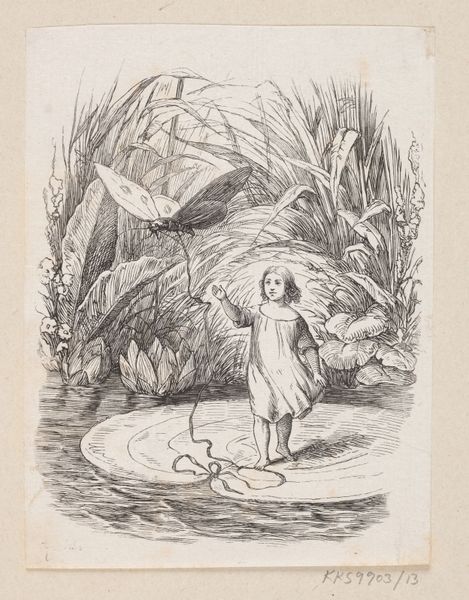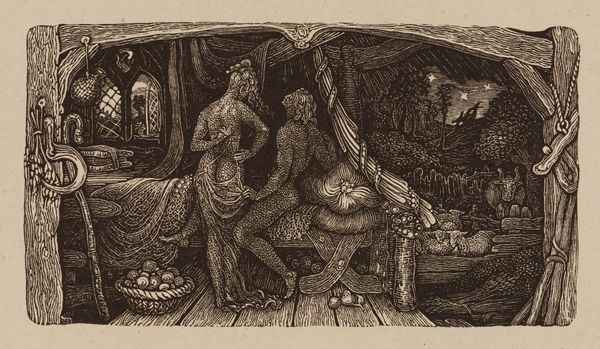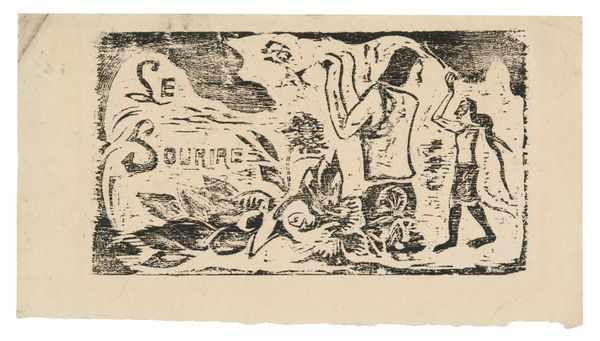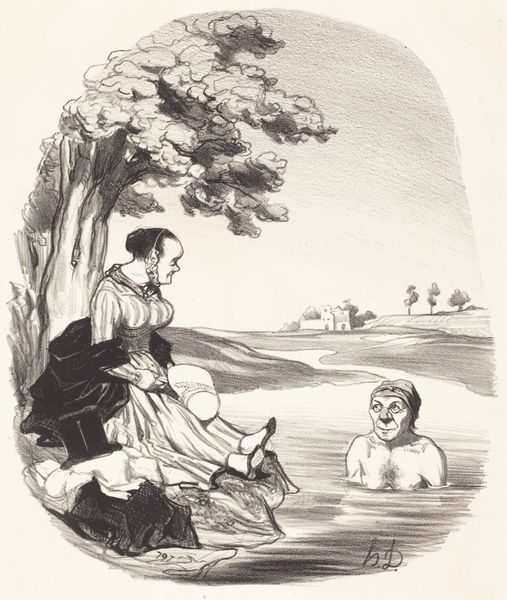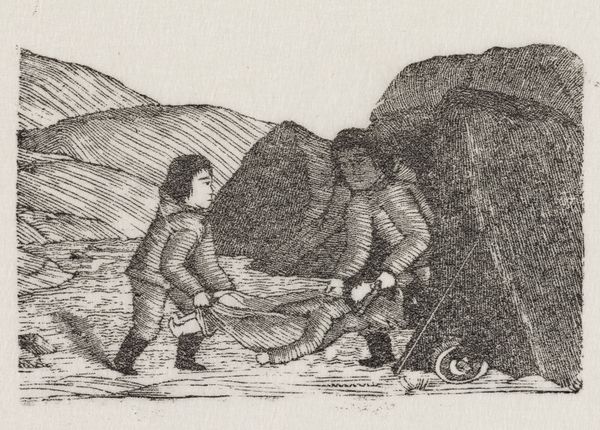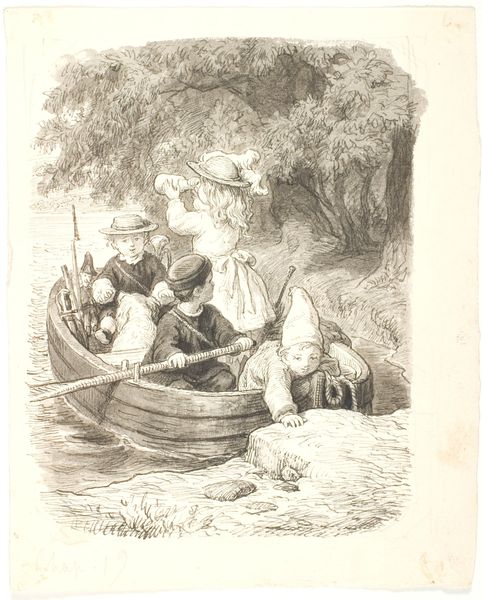
print, woodblock-print, woodcut
# print
#
figuration
#
woodblock-print
#
woodcut
#
indigenous-americas
Dimensions: 43 mm (height) x 63 mm (width) (billedmål)
Curator: Here we have Markus Lynge's woodcut titled "Ildboring," dating from around 1859 to 1860. It's a striking image in stark black and white. Editor: Yes, the lack of color immediately pulls me into a world stripped down to its essential forms. There's a rawness to it. Curator: It depicts two figures, seemingly children, engaged in the act of fire-drilling. One uses a bow drill, while the other appears to be feeding fuel into the nascent flame. This action in itself bears huge historical importance. Editor: Absolutely. You can read this image as a window into indigenous technology and survival. What really jumps out is how serious these children seem. This isn't play; this is fundamental knowledge being passed down. Curator: Exactly! And I find the cultural memory imbued in the action utterly fascinating. Fire represents so much across cultures—warmth, safety, community, even divinity. To see these children so directly involved in its creation suggests continuity, and reliance. Editor: And let's consider the politics inherent in the act of representation. Who gets to depict these children? And what narrative does this stark black and white imprint? Were the circumstances of that Greenlandic culture taken into consideration? Curator: Good questions. During this period, Danish colonization was significantly impacting Greenlandic culture. While Lynge himself was Greenlandic, the act of creating this print and displaying it in a museum implicates it within that power structure. There’s this dynamic, I feel. It evokes a nostalgic lens on native people from afar. Editor: You are right, this visual depiction almost aestheticizes indigenous practices by freezing them in time. Curator: The medium too—woodcut—lends a weight, almost like carving memories directly. Do you also find the directness in its carving translates the same clarity as purpose? Editor: I see it! The deliberate carving contributes so powerfully to its message of resourcefulness but it is all so tightly-knit that feels frozen and less nuanced to contemporary readings. Thank you for that insight. Curator: And thank you! Exploring how it interplays so many levels to transmit this symbolic meaning that can be interpreted as so powerful.
Comments
No comments
Be the first to comment and join the conversation on the ultimate creative platform.
